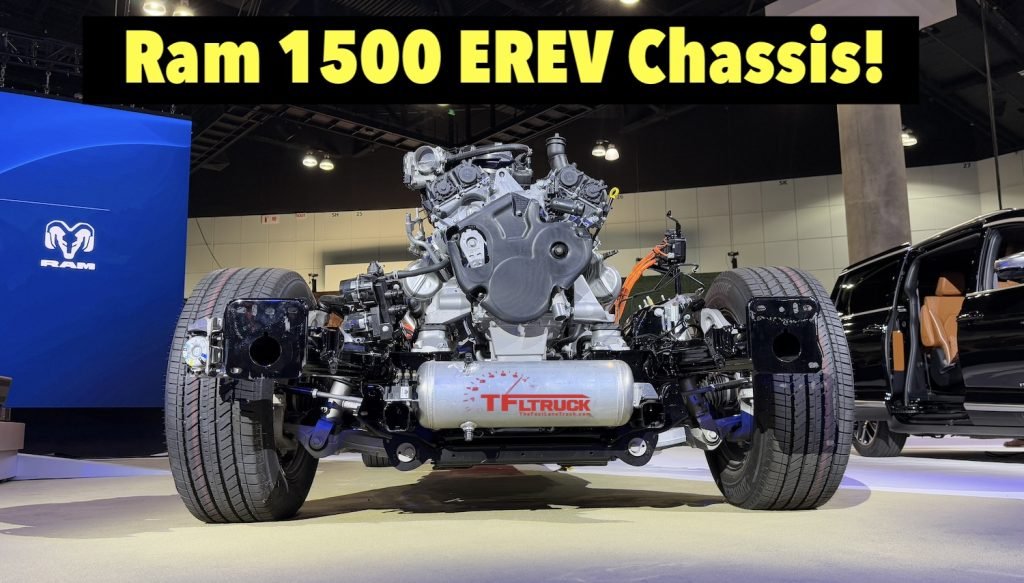Introduction
People who are not ready for a battery EV often make a compromise and decide to settle on a hybrid EV. The advantages of a hybrid EV are well known. You have both the conventional internal combustion engine and an electric motor powered by a small battery, both of which seamlessly combine to give you the best of both worlds.
| ICE | PHEV | EREV | EV | |
| Powertrain | ICE | ICE + Electric Motor | Electric Motor with Gas Generator | Electric Motor |
| Fuel Type | Gasoline or Diesel | Gasoline + Electricity | Gasoline + Electricity | Electricity |
| Range | 300 – 400 miles | 500 – 600 miles | 500 – 600 miles | 350 miles |
But while hybrids have garnered plenty of attention, they have a relatively lesser well known cousin that is just as effective – the Extended Range Electric Vehicle (EREV).
What are EREVs?
The EREV is still a “hybrid” vehicle that uses both electricity and gasoline, but it employs only an electric motor to turn its wheels as opposed to the conventional hybrid car which uses both an electric motor and an internal combustion engine to power its wheels.
EREVs are a smart piece of engineering in that it combines the efficiency and high torque advantages of the electric motor with the high energy density of gasoline or diesel. The gasoline stored in the fuel tank of an EREV is directly converted to electrical energy through a generator which is then used to recharge the battery.

What this does is that it automatically “extends” the range of a regular EV, hence the name “Extended Range Electric Vehicle”. This extended range is particularly useful for longer range applications of an SUV or a Pickup.
The EREV Market Today
The most popular EREV on the market today is the Li Auto 9. While the electric battery on the Li Auto 9 is only 45 kWh which is equivalent to around 200 miles, it has a 65 liter electric truck that when combined with a V-6 engine can power the battery to 690 miles.
The US already has had two EREVs on the market, the Chevy Volt and the BMW i3. But where they are likely to see most traction is in the slightly larger SUV and pickup truck segments.
Stellantis is slated to release its own EREV in the US market in 2025. The Stellantis 1500 Dodge Ramcharger pick up truck has a 92 kWh battery pack along with a fuel tank and generator that provides it with a total range of 690 miles. This is well in excess of ranges that are possible on standalone electric trucks like the Cybertruck and F150 Lightning and allows the trucks to be used to tow larger amounts of payload over longer distances.

Disadvantages of an EREV
So if EREVs are this great, shouldn’t they be the vehicles of the future?
Not so much.
The simple fact is that EREVs, like hybrid EVs, still has two motors that need to be maintained and taken care of. So while EREVs get the performance characteristics and high torque of an EV via its electric motor the added presence of a generator will mean that they will not benefit from the reduced maintenance typically seen in an electric motor only EV.
Not only that, an EREV is still an EV, and a lot of new EVs are still having reliability issues. Moreover, when you add in a generator it adds further complexity to the overall system which makes it slightly tougher to ensure reliability that is at par with a regular ICE car. Generally speaking, the more complex a system is, the higher the entropy of the system, which results in a lower useful life.
Are EREVs here to stay?
While EREVs appear to be a healthy compromise for the EV buyer who still suffers from range anxiety, they are still for most part a transitional technology. While EREVs give you the “best of both worlds” they will eventually be replaced by battery only EVs that have a much higher battery density than what is available in the market today. This means that auto OEMs who invest in EREVs will eventually have to stop investing in EREVs and transition to EVs. In other words, EREVs are a great short term strategy if you want to sell long range pickup trucks and SUVs today, but probably not a great long term strategy given where the market is expected to go. This is why you will never see innovative pure play EV companies like Tesla or Rivian selling an EREV.
So yes, an EREV is an impressive piece of technology that will be with for us a few years, but they are not the vehicles of the future!